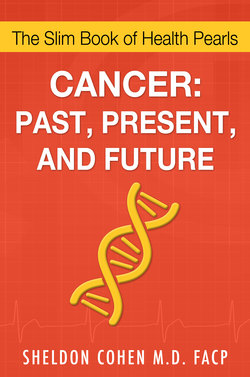Читать книгу Cancer: Past, Present, and Future - Sheldon Cohen M.D. FACP - Страница 4
На сайте Литреса книга снята с продажи.
CHAPTER 2 Classifications
ОглавлениеScience is built up with facts, as a house is with stones. But a collection of facts is no more a science than a heap of stones is a house.
Jules Henri Poincare
1854-1912
When physicians discuss a cancer diagnosis with patients, they will describe the cancer in reference to its location: stomach cancer, breast cancer, lung cancer, pancreatic cancer etc. This is simple to understand and clarifies the issue as to diagnosis and location.
Another method of describing cancer is by microscopic evaluation of the cancer itself. Histology is the section of biology that deals with the microscopic structure of organic tissues. On this basis, microscopically, cancer can be divided into five divisions based upon the histological picture and the portion of the microscopic structure that the cancer has originated from.
There are five divisions with this method:
1.A carcinoma is a cancer that arises in skin or in tissues lining internal organs such as the stomach, intestines, lungs, urinary bladder. Under this heading, there are various histological types based upon the microscopic picture including:
•Adenocarcinoma (adeno means gland) refers to a cancer arising in the glandular elements of the lining
•Squamous cell carcinoma refers to cancers arising from squamous cells, the main cell type of skin and the lining of the gastrointestinal track, lungs, urinary bladder, prostate, and uterine cervix
•Adenosquamous carcinoma refers to a combination of both types of cellular elements
•Carcinomas with either small or large cells
•Anaplastic carcinoma histologically represents the greatest disturbance of cell growth, making it difficult to distinguish squamous or glandular features
Carcinomas are most frequently found in the lung, breast, colon, rectum, prostate, and pancreas. They represent about 80 to 90 percent of all cancers.
2.A sarcoma is a type of cancer growing from connective tissue such as found in bone, cartilage, muscle, fat, and blood vessels. Connective tissue, as the name implies, “connects.” It serves a connecting function by binding other tissues. Connective tissue comes in a number of types:
•Loose connective tissue holds organs in place. There are three types:
1.Collagenous fibers made of collagen, a protein found throughout our bodies that binds and supports other tissues.
2.Elastic fibers. As the name implies they are stretchable: they can stretch and recoil.
3.Reticular fibers join connective tissue to other tissues.
•Fibrous connective tissue: found in ligaments and tendons.
•Specialized connective tissue
1.Adipose tissue stores fat
2.Cartilage: found in our joints, nose, ears, and trachea
3.Bone contains calcium giving bone its firm hardness
4.Fortunately, sarcomas are quite rare representing one percent of the 1.5 million new cancer cases each year. They are very difficult to treat.
3.Leukemia is cancer arising in the blood forming tissue (bone marrow), which prevents the bone marrow from producing normal red blood cells, normal white blood cells and normal platelets. Instead, the bone marrow produces cancerous blood cells that leave the bone marrow and circulate in the blood vessels throughout the body.
4.Brain and spinal cord cancers are made up of neurological tissue.
5.Lymphoma and Multiple Myeloma are cancers that arise in the cells of or the lymph glands of the immune system. Lymphomas occur in two varieties: Hodgkin’s lymphoma and non-Hodgkin’s lymphoma. Myelomas grow in the plasma cells of the bone marrow, sometimes collecting in one bone where it is known as a plasmacytoma, or collecting in multiple bones known as multiple myeloma.
